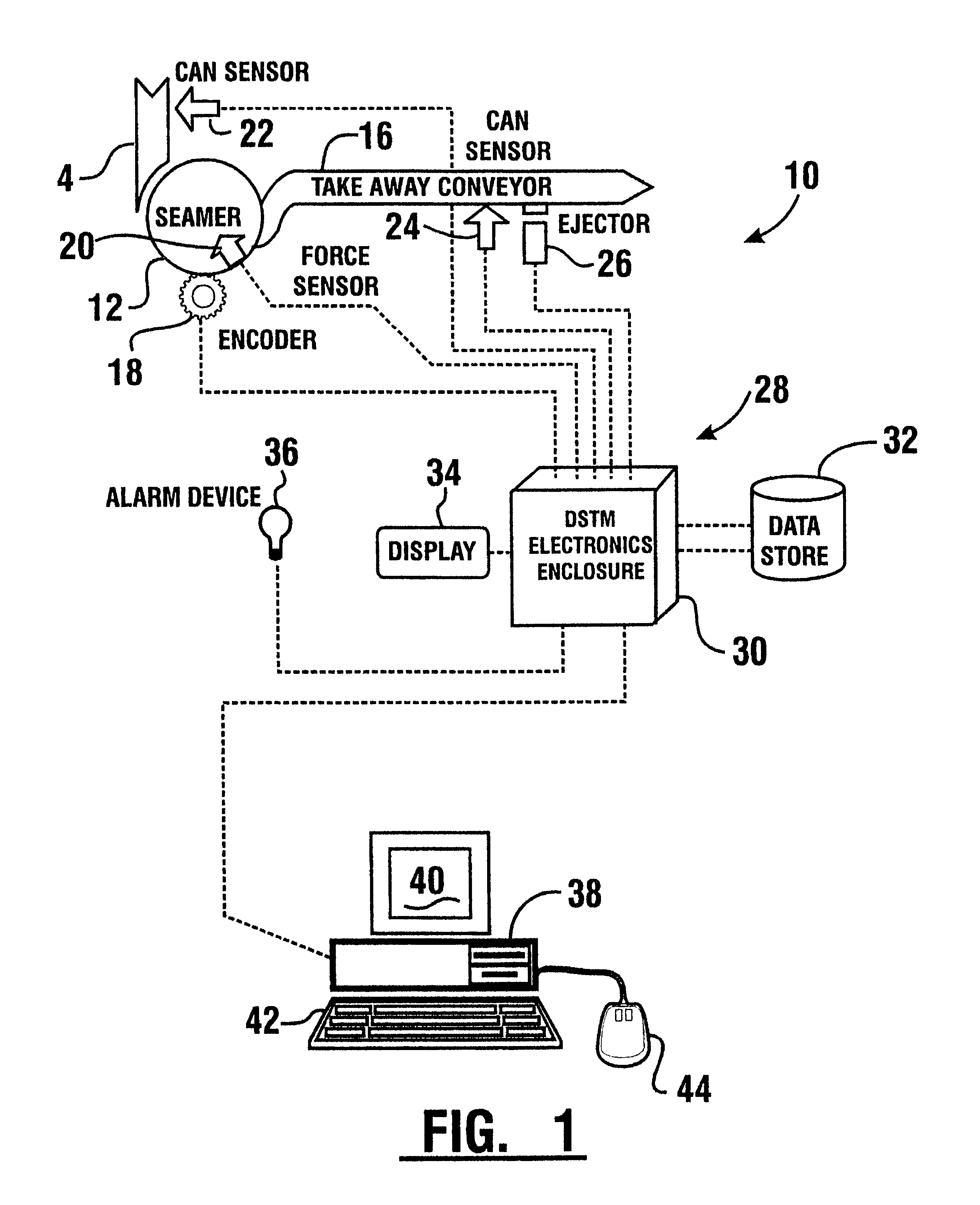Can seam forming apparatus
a technology of seam forming and cannon, which is applied in the direction of apparatus for force/torque/work measurement, instruments, measurement devices, etc., can solve the problems of inability to meet the needs of use, and inability to withstand the pressure of the internal air, so as to reduce the risk of cam failure, reduce the set-up time, and be reliable and economical to operate.
- Summary
- Abstract
- Description
- Claims
- Application Information
AI Technical Summary
Benefits of technology
Problems solved by technology
Method used
Image
Examples
Embodiment Construction
Referring now to the drawings and particularly to FIG. 1, there is shown therein a schematic view of an embodiment of the apparatus of the present invention generally indicated 10. The apparatus includes a double seam forming can seamer 12. In the preferred form of the invention seamer 12 is of the type that attaches can ends on to can bodies through formation of a hermetic folded double seam. The seamer may be of a type shown in U.S. Pat. No. 3,465,703 which performs first and second seaming operations to form a circumferential seam. The seamer preferably includes a plurality of stations. For purposes of this illustrative embodiment the seamer includes six (6) stations. Of course, seamers with different numbers of stations may alternatively be used.
The apparatus 10 is in operative connection with a feed conveyor 14. Feed conveyor 14 feeds open can bodies preferably containing a product to seamer 12. A take-away conveyer 16 carries away the cans upon which the ends have been install...
PUM
| Property | Measurement | Unit |
|---|---|---|
| force | aaaaa | aaaaa |
| threshold value | aaaaa | aaaaa |
| threshold | aaaaa | aaaaa |
Abstract
Description
Claims
Application Information
 Login to View More
Login to View More - R&D
- Intellectual Property
- Life Sciences
- Materials
- Tech Scout
- Unparalleled Data Quality
- Higher Quality Content
- 60% Fewer Hallucinations
Browse by: Latest US Patents, China's latest patents, Technical Efficacy Thesaurus, Application Domain, Technology Topic, Popular Technical Reports.
© 2025 PatSnap. All rights reserved.Legal|Privacy policy|Modern Slavery Act Transparency Statement|Sitemap|About US| Contact US: help@patsnap.com



